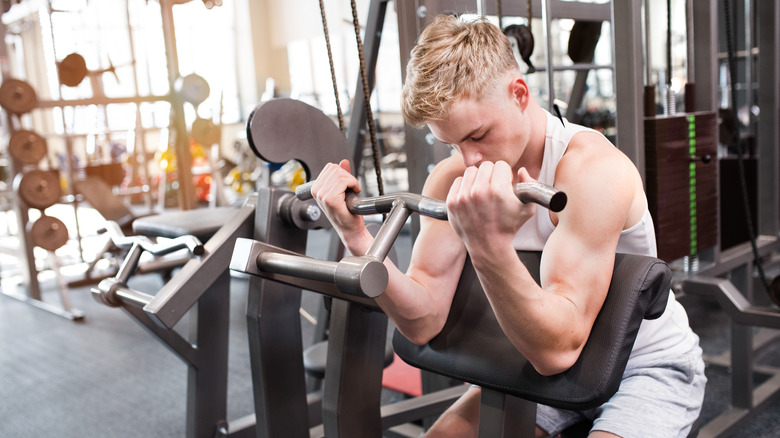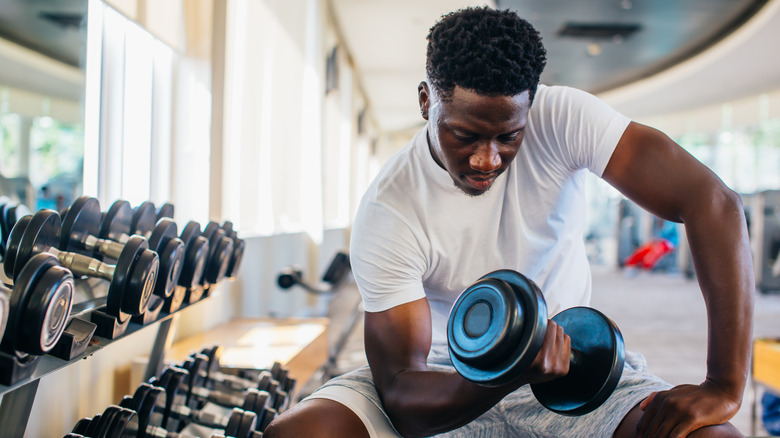Why You Should Avoid The Bicep Curl Machine At The Gym
Step into any gym and you're likely to be dazzled by the array of machines and fitness equipment available. Many of those machines offer some stellar benefits. As Coach Magazine explains, weight machines isolate muscles in a way that free weights and bodyweight exercises do not. This isolation allows beginners to learn what engaging and working specific muscle groups feels like, setting a foundation for free weight and bodyweight work. However, there are some inherent problems with using weight machines. People can "cheat" by leaning forward or back, throwing their full weight into the motion so they aren't actually isolating the proper muscles. As BestLife explains, exercise machines can even lead to issues with a person's posture or form because the machine limits their positioning.
Bicep curl machines come with their own set of problems, enough that both BestLife and The Barbell recommend skipping them in favor of free weight bicep curls instead. As with other machines, the issues are rooted in how they affect a person's form. Luckily, there are alternatives to help experienced weight lifters and beginners alike properly work their biceps.
Focus on your form during curls
A quick image search for bicep curl machines reveals that many require users to perform a curl variety known as the Preacher Curl. This position has the person's elbows on a padded bench as they hold onto a set of handles. Those handles are the part of the machine that rotates during the curl, moving the weights. It is one form of curl among several tested by the American Council on Exercise (ACE).
The published results of the 2014 study from the ACE suggest Preacher Curls were among the least effective. This is because the actual work of the Preacher Curl isn't in the curl, it's in the release. Gravity pulls the weight down and the user has to exert control to avoid just letting it fall, which presents an injury risk. At the other end of the spectrum, taking first place, is a concentration curl which cannot be done on a bicep curl machine. This variation focuses on one arm at a time with the active arm's elbow braced on the knee of one leg as the person performs the curl from a sitting position. It requires the person to actively use the appropriate muscles and isolating them without sacrificing form.


